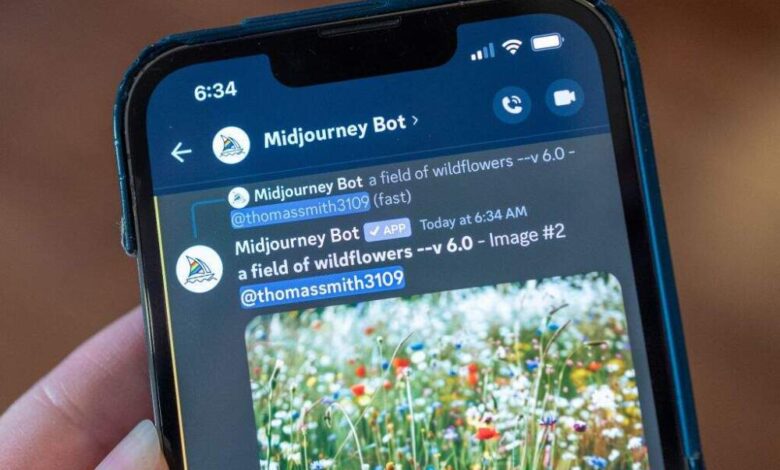How AI is polluting our culture

AI-generated content online is almost impossible to avoid. There are AI-boosted Google search results, AI-generated imagery, AI-generated articles, AI-generated music, even AI-generated children’s TV shows.
Neuroscientist Erik Hoel says we’re drowning in “AI dream slop.”
Today, On Point: The cost to our humanity in a world of synthetic culture.
Guest
Erik Hoel, neuroscientist and writer. Author of the Substack newsletter The Intrinsic Perspective.
Transcript
Part I
DAVE ESPINO: Imagine making $1.2 million creating AI generated videos. We’re going to show you how in this video.
MEGHNA CHAKRABARTI: That’s Dave Espino, host of a YouTube channel called Making Money With AI. In that clip you just heard, Espino’s using a company called RV AppStudios as an example of how to make those bags of money.
RV AppStudios makes games and apps for adults, some of which you have to pay for. They also make free games, apps, and online videos for children. And they do that with AI, as Espino says. He describes how RV AppStudios makes the content on one of their kids’ learning channels called Lucas and Friends.
ESPINO: Yeah, this channel is mind boggling. It has 917,000 subscribers. This is the type of animation that you can create. Let me show you really quick. And you could create that type of animation using AI, and these are mostly learning videos. So the kid is getting some great value, they’re learning all kinds of stuff.
These are for toddlers, as you can see.
CHAKRABARTI: Dave’s co-host, James Renouf, emphasizes repeatedly that gone are the days where children’s television makers need a huge staff of writers and animators. All you need now is some AI software, and in the quote “writer’s room,” ChatGPT.
JAMES RENOUF: And I don’t want people to say, gosh, it takes, these videos are 30 minutes long.
First of all, these are like not crazy dialogue here, okay? We’re not writing Shakespeare, okay? It’s like the letter A, the letter B. And you can use ChatGPT to make these little scripts. So say make me a little script where we teach kids ABCs, or we teach them numbers, etc. And then you use the power of AI to make these videos.
You don’t have to be a graphic artist. It’s amazing what can be done very simply. So little Johnny here, go learn your ABCs while mommy puts her feet up, okay? You create these kind of videos and you can have a channel blow up.
CHAKRABARTI: (LAUGHS) Sorry, as a mommy myself, yeah, sometimes you want to put your feet up, but that’s not necessarily why you would need your child to learn the ABCs.
But the point is that kid’s content on YouTube these days is a very different beast than traditional educational kids’ television. For example, The Sesame Workshop, home to Big Bird of course, has more than 1,000 employees in the United States alone. And among them are an army of childhood learning experts who obsess over the latest research on child development, and they even commission studies of their own, such as a 2021 study Sesame Street commissioned to investigate how the pandemic was impacting young children in particular, and how they could incorporate those findings into their television programming.
Over at RV AppStudios, it’s not clear how much research or academic expertise informs how they create Lucas and Friends. Maybe there is, but it’s not easy information to find. But it is clear that the company is having an impact, given the kind of metrics that matter most to digital organizations, metrics like 400 million free kid apps download so far, pacing at 15 million more every month.
Their AI generated YouTube videos get millions of views within weeks of being posted. So here’s an example of one. This is from Lucas and Friends, their animated YouTube video. And you can’t see it, but it’s Lucas, a yellow animated animal figure, happily teaching your baby how to wave.
LUCAS: Hello, friends! Wave your hand and say, Hello! Hello! Hello! When you meet someone, you say, Hello! When you meet someone, you say, Hello!
CHAKRABARTI: Joining us today is Erik Hoel. He’s a neuroscientist and writer and author of “The World Behind the Word: Consciousness, Free Will, and the Limits of Science.” He’s also author of a Substack newsletter called “The Intrinsic Perspective.” Erik, welcome to On Point.
ERIK HOEL: Thank you so much for having me.
CHAKRABARTI: You were literally grimacing when we played that sound from Lucas and Friends. Is it up there in sort of the Baby Shark level of adult irritation for you?
HOEL: No, I think Baby Shark is so much better. Only a human could write a tune as catchy as Baby Shark.
I first stumbled across this stuff while I was researching the proliferation of AI generated content on the internet. And I wrote about it on my Substack and then Wired ended up doing an investigation into some of the channels. And what I found was that if you look at the actual content of these videos, most of the time there are numerous errors, deep, baked deep into them.
So they’ll show a shape, that’s a hexagon, they’ll say it’s a pentagon. They are incredibly formulaic because they have to be. In the end, these technologies, like forgetting about this sort of moral, philosophical question of if we should be entrusting non-human minds with the education of our children, there’s still just the practical question of these things get a lot of things wrong.
I was recently testing some of these more frontier models of AI’s. I’ve been teaching my son to read. He turns three in a week. And so we’ve been going over simple sentences with the most common letter sounds. And so you can create these simple sentences. And it’s really the best way, I think, to teach a child to read.
So you say something like Bob sat in mud. And I have to create a lot of these sentences to give him new sentences to practice, and it’s this boring task. Perfect, I would think, for an AI to maybe outsource this, too. So I tried honestly using the AI for some lesson planning to give me back simple sentences.
And I asked the smartest AI, which I think is probably Claude Pro, maybe this new recently released GPT 4.0 is slightly better. But at the time that I asked Claude Pro. Claude was basically the leading model and it couldn’t do it. It couldn’t come up with sentences that are all the simplest sounds because it’s something that’s not in their training set.
It’s a weird ask and in the end, it would say something like, Bob was big. Was? That’s not the way an S normally sounds, is it? And even when I pointed out the mistakes to it, it would go back and make the same mistakes over again. And if you can’t teach a two-year-old basic letter sounds, how are you going to scale that up to, the dreams of AI supplementary tutors teaching, physics to kids?
CHAKRABARTI: I suppose you could argue that the more complex the learning, maybe the better the AI is at it, but we’ll come back to that in a second. It’s interesting that you made the example of ‘was.’
And the S sound. Of course, that sort of more Z sound is, in American English, the S sometimes makes that sound. But the key thing is the progression in which how a child learns the different kinds of S sounds there are, right? And it stuck the was in there, whereas for an early reader, sat or something like that would probably have been better, right?
So it’s understanding how the child learns, which seems, at least in that example, seems to be missing a little bit.
HOEL: And I don’t think that the people making these YouTube generated videos are using even the latest frontier models. They’re using whatever the cheap, free versions are.
CHAKRABARTI: To that point, we heard them say all you need is an animation, AI program, and ChatGPT. Okay, so Erik, I love doing real time experiments. It drives the staff crazy because they have no idea what I’m going to do. But I have a computer here, obviously, in the studio with us, and I’ve got ChatGPT.
This is 3.5. Open, it’s the free one. Alright, so let’s write a script for a kid’s animated YouTube short.
HOEL: (LAUGHS)
CHAKRABARTI: So I’m going to say, write a script for a toddler’s YouTube video, should we say that?
HOEL: Sure.
CHAKRABARTI: About what? Let’s do learning how to read. Okay teach the child. Let’s make it a little more specific, to be fair.
HOEL: Let’s say, teach them the most common letter sounds.
CHAKRABARTI: Teach the child the most common letter sounds. Should we specify how long the script should be?
HOEL: Yeah, can you say, create simple sentences?
CHAKRABARTI: Okay.
HOEL: That use only the most common letter sounds.
CHAKRABARTI: Sentences. I’ll say create 15 sentences. Simple.
HOEL: Sentences that use only the most common letter sounds.
CHAKRABARTI: Letter sounds. Ready?
HOEL: Okay. Live experiment.
CHAKRABARTI: Okay. Oh, it’s thinking. Ha! Title card! Let’s learn letter sounds with Tim. Timmy, cheerful music plays as video begins. Oh my god. This is actually quite a long script, ChatGPT, a good thing I don’t have to pay it. Then Timmy says, Hi friends.
I am Timmy. And today we’re going to learn some super cool letter sounds together. Are you ready? Yay. Okay, he claps his hands, and he says let’s start with the letter ‘A.’ Can you say A? Oh, A, it says ah, so that’s the letter sound.
HOEL: So already we asked it to create 15 sentences that only used the most common letter sounds.
It didn’t create 15 sentences that used the most common letter sounds.
CHAKRABARTI: Oh, there’s more though, I scroll, I gotta scroll, oh no, it didn’t. It just says the letter sounds, C, cat, D, dog, I’m getting my child YouTube video voice on here, E, elephant, oh where are the, there’s no sentences.
HOEL: Yeah. Okay. Yeah, exactly.
‘Cause you asked it to do something slightly weird.
CHAKRABARTI: It doesn’t seem weird.
HOEL: No. It doesn’t seem weird to us. But if you think about what’s in their training set, there’s probably a huge number of scripts in the training set. But you asked for something very specific. And most of the time, these AIs are just not very good at out-of-distribution sampling.
So what you’ve been presented with is something that looks impressive. It’s a lot of text, right? But it’s not actually really grokking the fundamental thing of what you just asked it for.
CHAKRABARTI: Yeah.
HOEL: And now if you imagine the feedback between a confused child and the AI, right? You get this spiral of confusion.
And this is when it’s interactive. Most of these scripts for these YouTube videos are exactly like this. They’re just the most obvious, what would it be, ‘A’ for Apple, et cetera, et cetera, et cetera. Getting it to do anything beyond that, it’s actually surprisingly difficult.
CHAKRABARTI: Wow. Okay, so Timmy goes on to say, Timmy, I’m actually calling this character like it really exists. Whee! That was fun! Let’s do more! And then, you get down to P! Penguin! Claps! Q! Queen! Oh, see, Q is really interesting one. That’s really interesting.
HOEL: Queen.
CHAKRABARTI: Queen. Yeah. You’re not actually teaching what the ‘Q’ needs to do.
Do you know when I was in kindergarten, I took a little test and I was asked by the test giver Meghna, say a sound, say a word that starts with ‘Q.’ And I said cute, right?
HOEL: (LAUGHS) Clever.
CHAKRABARTI: But again, it’s like, how does the brain work in terms of processing information? And here’s the thing. This is why we’ve invited you not to use ChatGPT to write new YouTube kids’ content, Erik. But you’ve written extensively about how this kind of quickly generated AI content is everywhere, to the point where you say it’s hurting our culture. It’s hurting our way to consider, think of ourselves as human beings.



